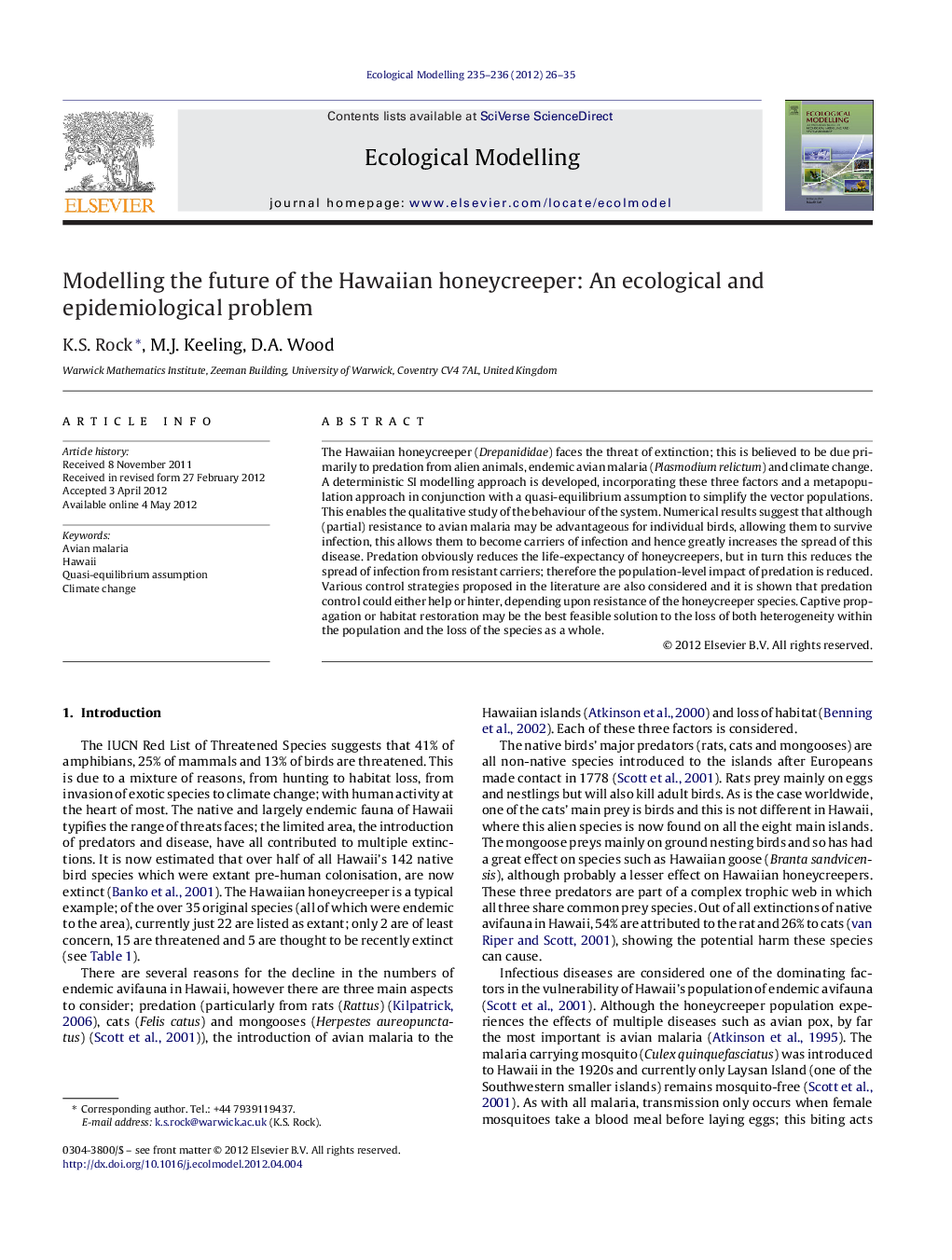| Article ID | Journal | Published Year | Pages | File Type |
|---|---|---|---|---|
| 4376446 | Ecological Modelling | 2012 | 10 Pages |
The Hawaiian honeycreeper (Drepanididae) faces the threat of extinction; this is believed to be due primarily to predation from alien animals, endemic avian malaria (Plasmodium relictum) and climate change. A deterministic SI modelling approach is developed, incorporating these three factors and a metapopulation approach in conjunction with a quasi-equilibrium assumption to simplify the vector populations. This enables the qualitative study of the behaviour of the system. Numerical results suggest that although (partial) resistance to avian malaria may be advantageous for individual birds, allowing them to survive infection, this allows them to become carriers of infection and hence greatly increases the spread of this disease. Predation obviously reduces the life-expectancy of honeycreepers, but in turn this reduces the spread of infection from resistant carriers; therefore the population-level impact of predation is reduced. Various control strategies proposed in the literature are also considered and it is shown that predation control could either help or hinter, depending upon resistance of the honeycreeper species. Captive propagation or habitat restoration may be the best feasible solution to the loss of both heterogeneity within the population and the loss of the species as a whole.
► We model a Hawaiian bird population incorporating the 3 most important factors. ► We examine the effects of possible conservation strategies. ► Some posed conservation methods may exhibit counter-intuitive deleterious effects. ► Either captive propagation or habitat restoration is the best realistic solution.
